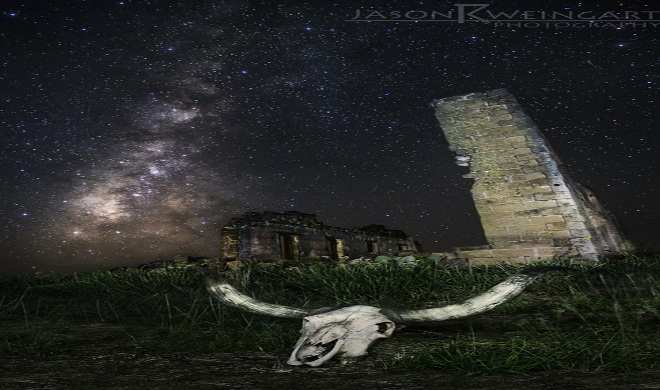
Local News
The Final Tragedy of San Fernando Academy
In the small town of Pontotoc, TX, lies a pile of rubble where San Fernando Academy once stood. In 1882, San Fernando Academy was founded and, at any one given time, had as many as 200 students. However, the academy has since endured nothing but a series of tragedies. In 1887, typhoid fever overtook the town and killed so many people that by 1888, the town cemetery had to be closed down. In 1889, San Fernando Academy was purchased by the Pontotoc Public School and remained in use until 1927. In 1947, a massive fire swept through Pontotoc’s stores and buildings, including the San Fernando Academy building, diminishing it to ruins.
 Photo: Vintage Texas
Photo: Vintage Texas
In September of 2013, Austin Photographer Jason Weingart came across the ruins of the San Fernando Academy and decided it would make for some interesting photos. He instantly fell in love with the area. After all, it is beautiful and not even being at the wrong end of a shot-gun could convince him otherwise. Three years later, Weingart decided it was time to take another trip to the charming town of Pontotoc. He had some new ideas for a photo shoot of the ruins, however, when he returned all he found was a pile of rocks.
Upon asking one of the locals, Weingart discovered the old San Fernando Academy ruins had been hit by yet another disaster. The strong storms that had passed through just a few days prior to Weingart’s visit had completely demolished the remainder of the building. According to Weingart’s blog post, When History Dies, the local man recalled that “the sound of the crash was so loud that he heard it from inside his home several blocks away.”
 Photo: Jason Weingart
Photo: Jason Weingart
It seems mother nature was bound and determined to wipe out San Fernando Academy, and she finally succeeded, leaving a hole in the hearts of those who found the ruins endearing. “In a way, it felt like a part of me had died as I stood there looking at that pile of rocks. I can only imagine how the residents feel, as well as those that once lived there with their families”, wrote Weingart on his blog.
Reference:
Texas State Historical Association

